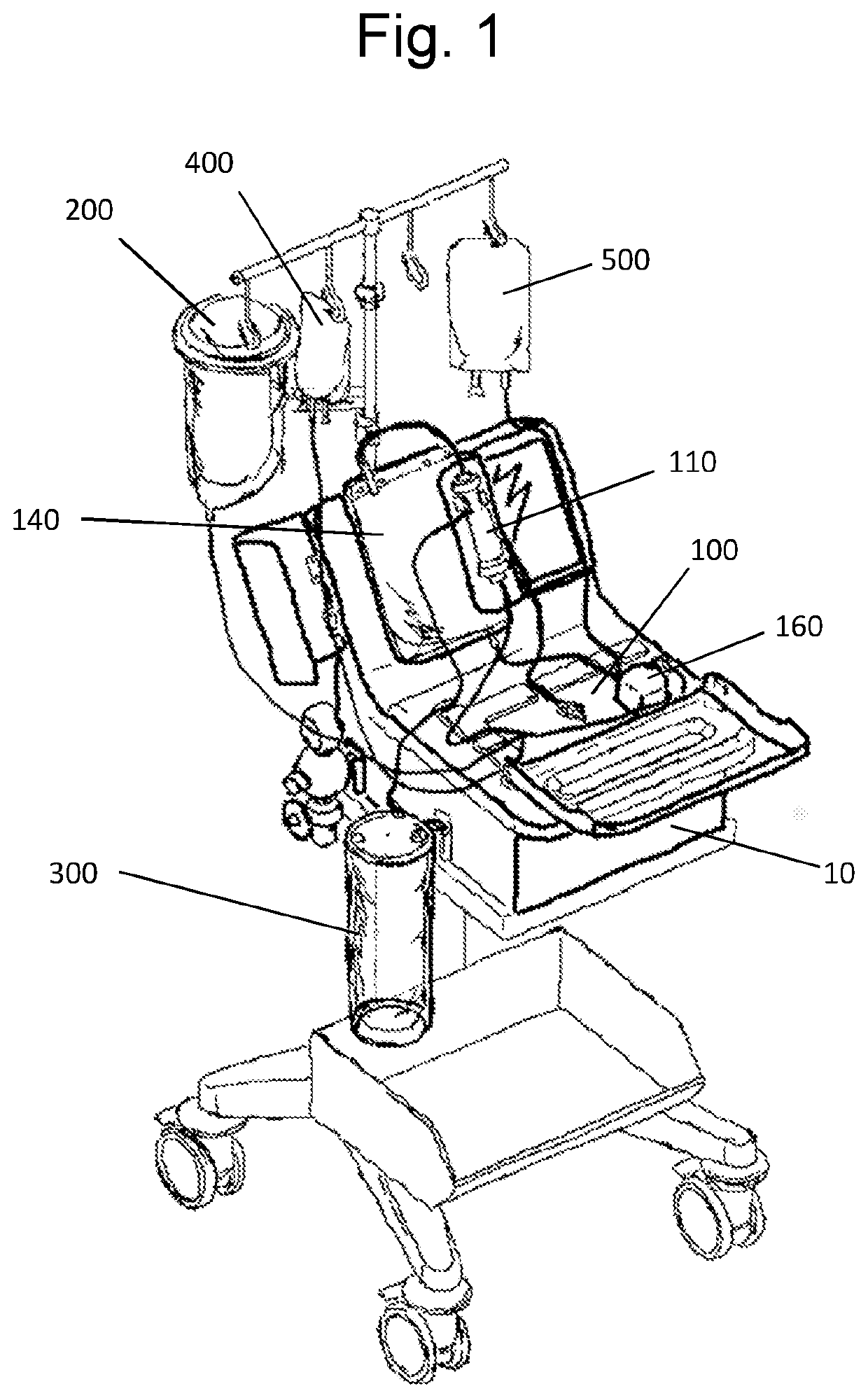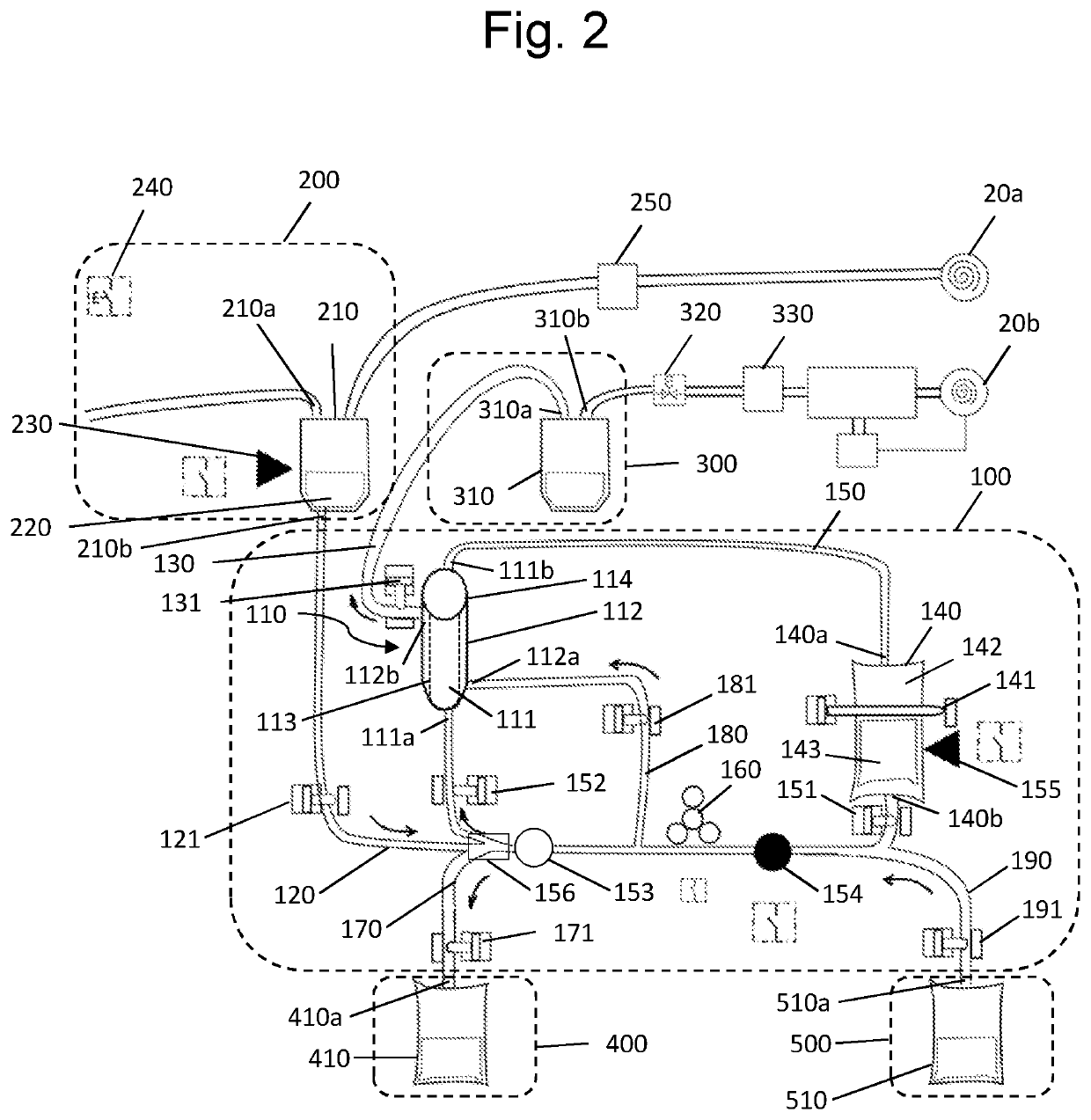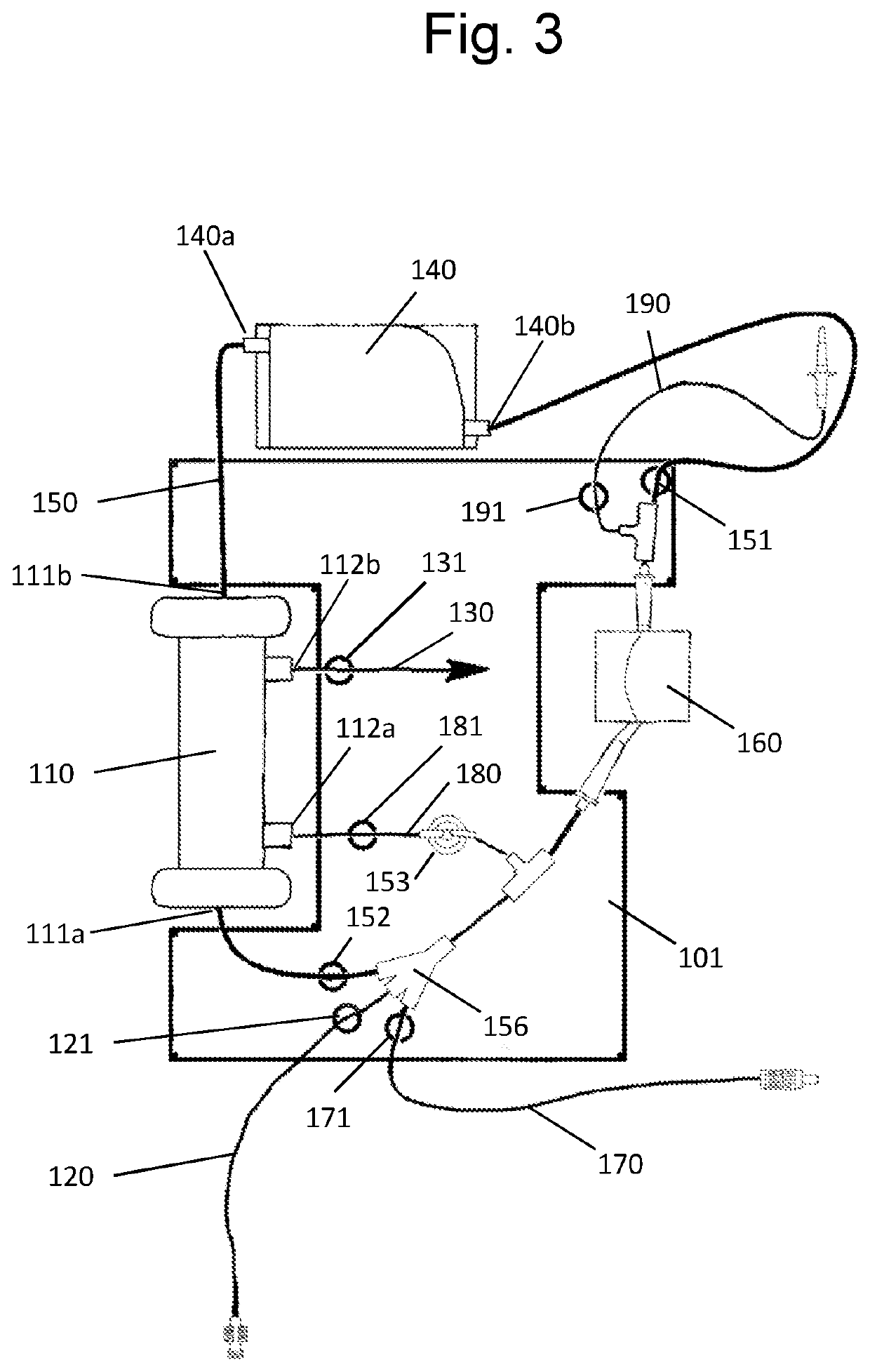System and method for treating haemorrhagic fluid for autotransfusion
a technology of autotransfusion and haemorrhagic fluid, which is applied in the direction of suction devices, blood transfusion, medical devices, etc., can solve the problems of limiting the haemolysis of patients, unable to achieve high platelet recovery rate by this method, and unable to achieve high platelet recovery ra
- Summary
- Abstract
- Description
- Claims
- Application Information
AI Technical Summary
Benefits of technology
Problems solved by technology
Method used
Image
Examples
first embodiment
[0119]FIG. 3 is a representation of a treatment unit of a treatment system, according to the first arrangement;
second embodiment
[0120]FIG. 4 is a representation of a treatment unit of a treatment system, according to the first arrangement;
[0121]FIG. 5 is a schematic representation of a treatment bag for the treatment unit of a treatment system according to the invention;
[0122]FIG. 6 is a schematic representation of a second arrangement of fluidic connections for the treatment system according to the invention;
[0123]FIG. 7 is a schematic representation illustrating an exemplary positioning of an additional prefiltration device for the treatment system described.
PUM
 Login to View More
Login to View More Abstract
Description
Claims
Application Information
 Login to View More
Login to View More - R&D
- Intellectual Property
- Life Sciences
- Materials
- Tech Scout
- Unparalleled Data Quality
- Higher Quality Content
- 60% Fewer Hallucinations
Browse by: Latest US Patents, China's latest patents, Technical Efficacy Thesaurus, Application Domain, Technology Topic, Popular Technical Reports.
© 2025 PatSnap. All rights reserved.Legal|Privacy policy|Modern Slavery Act Transparency Statement|Sitemap|About US| Contact US: help@patsnap.com



